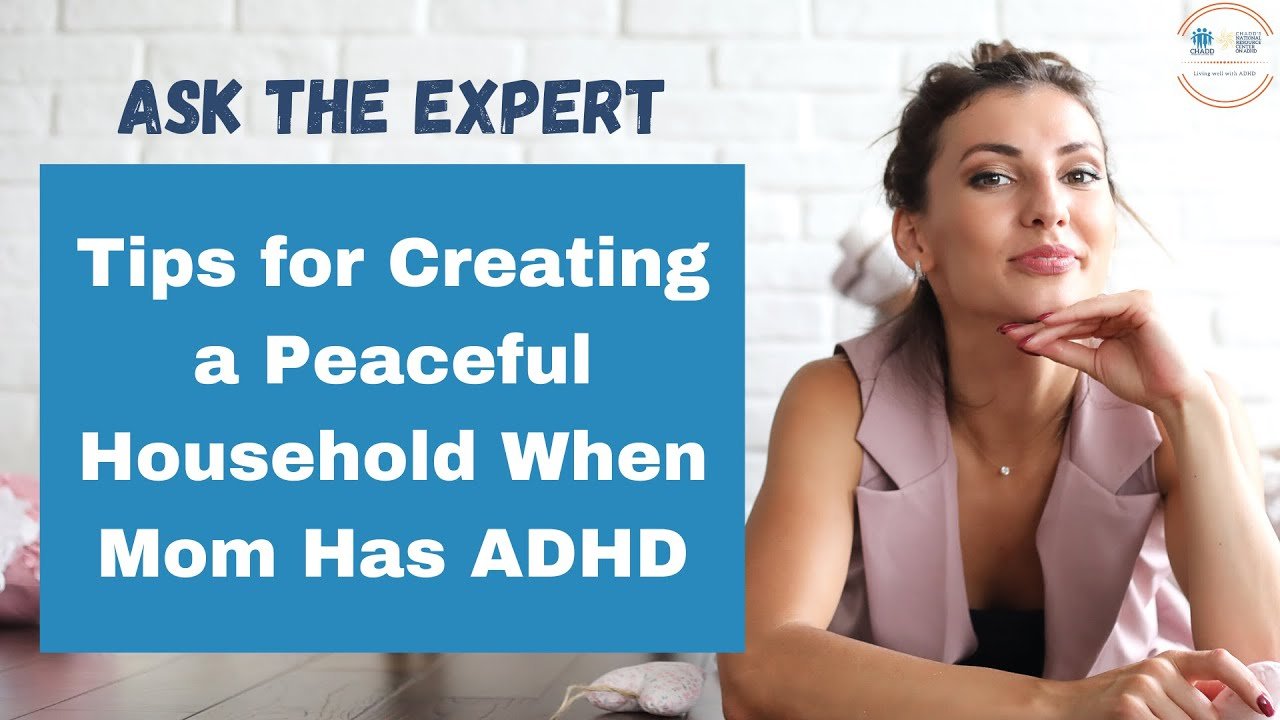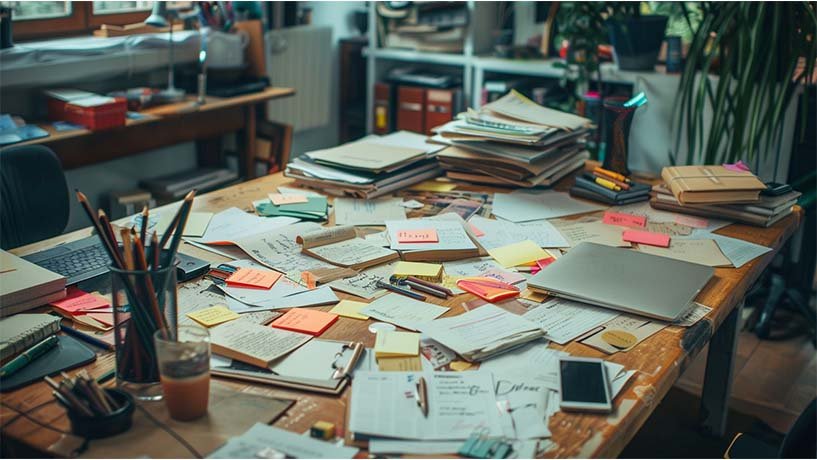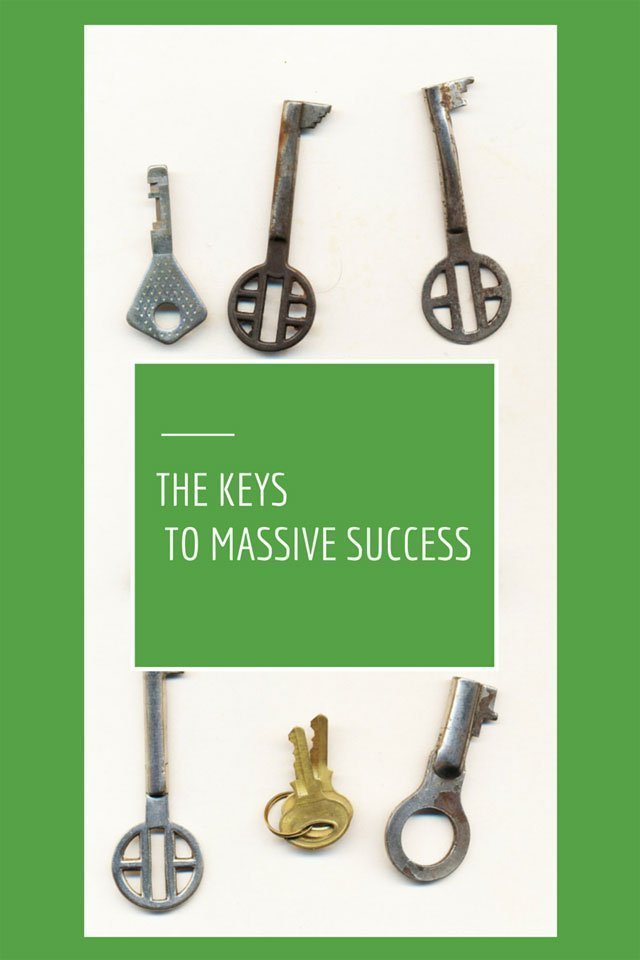There are days when I feel like I’m crushing it, and then I look up and realize I’ve spent five hours deep in one task while everything else has unraveled. That’s the reality of motherhood with ADHD. It’s not just forgetting appointments or misplacing your phone again. It’s the mental load, the overwhelm, the emotional whiplash of trying to be present for your kids, responsive at work, and still somehow remember to eat.
If you’re managing a lot, maybe too much, you might be wondering if there’s a better way to keep all the balls in the air without burning out. The good news is, there is. And it doesn’t require becoming a different person. You don’t need perfect discipline or a spotless routine. You just need systems that work with your brain, not against it.
Here are strategies that make chaotic days more manageable, especially when focus feels impossible and everything demands your attention at once.
You’re Not Lazy or Broken. This Is ADHD in Motherhood.
Most moms feel overwhelmed, but ADHD adds a layer that’s hard to explain unless you’ve lived it. It’s not just that your brain gets distracted. It’s that your focus can lock onto one thing for hours while the rest of your life quietly collapses in the background. Laundry piles up, texts go unanswered, dinner doesn’t happen. Then the guilt hits, and the cycle repeats.
This isn’t about laziness. It’s not a lack of care or effort. It’s executive dysfunction. It’s an overtaxed brain trying to do too many things without the right internal controls. You might forget something simple like switching the laundry, but remember every detail of a random conversation from last month. That inconsistency can feel defeating.
Understanding that this is neurological, not moral, is the first shift that helps. When I finally stopped calling myself lazy and started working with my brain instead of against it, everything started to change. Not overnight, but enough that I stopped feeling like I was failing at life.
Create Transitions That Actually Work
One of the hardest parts of ADHD isn’t starting or even finishing a task. It’s switching from one thing to another without falling apart in the middle. Transitions can feel like slamming on the brakes while going full speed, and sometimes my brain just refuses to make the turn.
For me, hyperfocus is a double-edged sword. I can lock in for hours and get an unreal amount done, but I lose track of time, skip meals, ignore messages, and forget the other parts of my life that need attention. It’s not just distraction. It’s being consumed by the task in front of me and forgetting the rest of the world exists.
What helps is building gentle interruptions into my day. I use alarms, visual timers, and the Motion app to create external signals that it’s time to shift gears. Even then, the transition isn’t easy, but having a plan waiting for me on the other side makes it more doable. I try to keep transitions low-pressure. Five-minute resets, quick walks, or even just standing up to stretch gives my brain space to pivot instead of crashing.
Use Time Blocking with Help from AI
Time blocking used to feel impossible. I’d create a perfect schedule, fall behind by an hour, and then the whole day felt like a write-off. ADHD doesn’t do well with rigidity. One distraction or detour and the structure collapses.
What works for me now is time blocking with the help of AI. I use Motion to plan my day and week. If I miss a task or something takes longer than expected, it automatically reshuffles everything to fit. That flexibility makes it easier to stay focused without the guilt spiral. I don’t have to replan. I just follow the updated flow.
Instead of assigning every minute, I block out chunks for work, home resets, errands, or downtime. I treat it like a living plan, not a fixed schedule. ADHD needs structure, but it needs room to breathe too. This system gives me both.
Let Tech Work for You, Not Against You
I’ve never believed I should keep everything in my head. That’s not how brains are meant to work, especially with ADHD. I’m a big believer in getting things out of your mind and into a system. But even with the right tools, the hard part is actually using them.
The problem isn’t forgetting. It’s capturing the task fast enough before it disappears. I’d open a to-do list app, get distracted by a notification, and forget what I was trying to write down. Even with Motion, I resisted using it consistently until I figured out how to make task capture frictionless.
Now, I use Siri to do it for me. I just say, “Hey Siri, Motion,” and it replies, “What’s the task?” I speak it out loud, and it instantly goes into my Motion calendar. It doesn’t interrupt what I’m doing. It just gets handled.
That one habit changed everything. The more automatic the capture, the more I trust the system. It’s not about having perfect tools. It’s about reducing the effort it takes to use them. Once that’s in place, tech actually becomes support, not another thing to manage.
Ask for Help Without Guilt
I used to think asking for help meant I was falling behind or not pulling my weight. But ADHD has taught me something different. It’s not about doing everything myself. It’s about making sure the important things actually get done, even if I’m not the one doing them.
Trying to manage work, a household, and kids with ADHD means there will be days when your bandwidth is gone before the day even starts. Delegating isn’t weakness. It’s resource management. I’ve learned to hand off what I can, whether that’s asking the kids to handle simple chores, sharing calendars with a co-parent, or letting certain things slide when I’m stretched thin.
The real shift came when I stopped measuring my success by how much I did alone. I started looking at whether my systems were working. That includes other people. That includes tech. That includes saying, “I can’t take this on right now” without apology.
If you’re drowning, it’s not noble to keep sinking. Ask. Assign. Let someone else take a turn.
Celebrate Progress and Consistency, Not Perfection
Perfection isn’t the goal. It never was. But that doesn’t mean ADHD gets to be an excuse either. I’ve had to learn to hold both truths. Be kind to yourself, yes, but also hold yourself to the things that matter. The things you said were important when you had the energy.
I used to burn out fast. Not because I was doing too much, but because the reward started to fade. Like Alex Hormozi says, people don’t burn out playing video games. We burn out when we stop getting the reward from our effort. And with ADHD, that reward often comes from the dopamine hit of starting, the rush of planning, the focus of the first sprint. But once that wears off, the work feels flat. You lose the drive, not because you’re lazy, but because the mental payoff disappeared.
That’s when I started looking for the reward in the work itself. Progress. Consistency. Showing up again when yesterday was a mess. I stopped waiting to feel like it and started treating consistency like proof that it’s working.
Some days I only do one small thing on my list. That counts. Some weeks I show up for everything. That counts too. I’m not chasing the high anymore. I’m building a habit of showing up, even when it’s not exciting. Because that’s where things actually change.
Why Motion Works When Nothing Else Did
If you’ve been nodding along but still wondering how to make all this stick, Motion is the one tool I actually rely on daily. I mentioned earlier how I use Siri to quickly capture tasks. That small habit made it effortless to stay consistent, and that consistency changed everything.
It’s not about being perfectly productive. It’s about building something that adapts when life doesn’t go to plan. If that’s what you need too, give Motion a try.
A Video Worth Watching: Practical Tips from Someone Who Gets It
If you’re looking for calm in the middle of chaos, I highly recommend this short talk by Terry Matlen. She’s not just a psychotherapist and ADHD coach—she’s also a mom with ADHD herself. That makes a difference. This isn’t theory. It’s real, practical advice from someone who’s lived it.
In this video, she shares tips for creating a more peaceful household when you’re juggling the demands of motherhood, work, and a brain that doesn’t always cooperate. Her focus is on simplifying, finding calm routines, and making space for your own needs while still showing up for your family.
Terry’s strategies are low-pressure and realistic, which is exactly what makes them powerful. No guilt. No perfectionism. Just simple shifts that can bring more peace into your daily life.
Frequently Asked Questions
How do you be a mom with ADHD?
Start by accepting that your brain works differently. You’re not a broken version of a “normal” mom, you’re a capable mom with a non-linear brain. Use tools that reduce friction, like Motion or voice-to-task systems. Build routines that work with your energy levels, not against them. Delegate. Automate. Let go of perfection and focus on showing up with presence and intention, even if it looks different from someone else’s version of “together.”
How can I be a good parent with ADHD?
Being a good parent doesn’t mean being flawless or remembering every school form. It means being attuned to your kids, learning to self-regulate, and modeling problem-solving and resilience. Use support systems, whether that’s tech, therapy, or teamwork—and stay consistent in the things that matter most. Your self-awareness and effort matter more than your executive function score ever will.
How does ADHD affect motherhood?
ADHD affects everything from planning meals to regulating emotions to transitioning between tasks. It can make daily parenting feel like you’re juggling 100 invisible tabs while someone keeps opening more. You might struggle with routines, time blindness, or burnout. But ADHD can also bring creativity, deep empathy, and flexibility to parenting, especially when you learn how to manage your energy instead of just your time.



